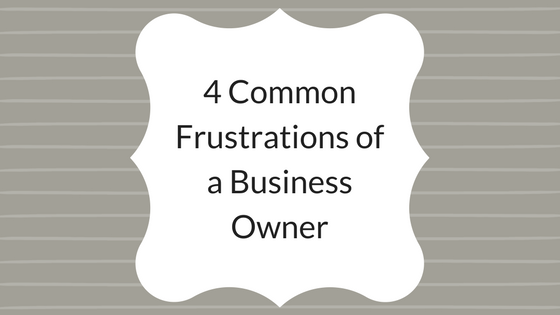
If you're like most business owners, owning and running your own business is a dream come true. It's an opportunity to make decisions that create the impact you' like to achieve. It allows you to put your skill set and determination on full display. But owning and running your own company can also have drawbacks.
No company is immune to setbacks. Even if you are both the proprietor of a company and the manager — especially, in fact — you should anticipate some frustrations. When they occur, it's your response to these inevitable hiccups, road bumps and pitfalls that determines how, or even if, your company will be affected.
A system backed by a plan for managing and eliminating those frustrations and setbacks is critical if you want to keep your dream of being a successful business owner on track.
EOS has a system in place and will develop a plan specific to your company's needs company, so you can move forward with confidence.
Here at EOS®, we often hear about four common frustrations from business owners.
Goal Setting Leads to Moving Targets
Especially when you first begin operations, it can be difficult to determine what business objectives are appropriate and achievable, which goals are unrealistic and unattainable, and what standards you should be setting for your business. It's vital to set realistic goals without lowering your standards or expectations.
Identifying the solid objectives and achievable goals you can target with your ambition and efforts — business objectives that are sufficiently pressing yet not unattainable —is one of the first measures an EOS model can address.
Many business owners set goals that are either too low or unrealistically high. The EOS model can help you learn how to set measurable, achievable goals that will help grow and solidify your business. To do so, you'll need to answer the following eight questions:
- What are your core values?
- What is your core focus?
- What is your 10-year target?
- What is your high-level marketing strategy?
- What is your three-year picture?
- What is your one-year plan?
- What are your rocks, or quarterly priorities?
- What issues are getting in the way of achieving all of the above?
Once you understand what you want to achieve, you must begin planning to accomplish your goals.
Communication is the first step in the process of achieving your goals.
Poor Communication
No matter what stage of development your company is in, communication is likely to be an ever-present issue. People will always be the foundation of your company. Second only in importance to your employees' production is their ability to communicate with you, with one another, and with your clients.
Once you've set clear goals for yourself, your company and your employees — and once you are certain your employees fully understand the company's vision — you must determine how your employees can best communicate their efforts, requirements, solutions and expectations.
The essential skills of communication include open, clear and concise relaying of information; managing nonverbal communication; and communicating through listening. The EOS model is a means of improving these essential skills of communication and helps condition the practice of "communicating up."
Communicating up is the practice of communicating with supervisors; building consensus around goals, objectives and action plans; and recapping communications for clarity and consistency.
In order to build a company with these communication qualities, you must start by hiring the most appropriate employees.
Hiring the Right Employees
Hiring the right employees is difficult. Even seasoned business owners with human resources departments sometimes make hiring mistakes. Especially when you’re just starting out, a bad hire can have consequences that sting.
Although It’s virtually impossible to achieve a zero-failure rate with respect to hiring employees, there is a data-based methodology to hiring. It's not an exact science, but the EOS model can help you minimize the number of employees you hire who turn out to be unsuited for your company.
To combat the high rate of poor hiring decisions, EOS teaches business owners to hire the right people for the right positions. The EOS model helps business owners understand what they are looking for in employees, how to plan interviews to determine if an employee has those qualities, how to conduct successful interviews, and how to make the best personnel selections.
Conventional Strategies Aren’t Working
The EOS model isn't just for new and burgeoning companies that need help getting off the ground. The EOS model is equally appropriate for established companies whose performance is underwhelming and companies that are failing to meet expected projections.
If you are not seeing the results you want and you’re struggling to figure out a way to get your company to the next level, it’s important to not fall victim to quick-fix strategies that will only delay the construction of a productive business plan.
EOS is a long-term solution that can help you achieve your business needs. The EOS model uses the same tools of inquiry to determine what's holding a company back, which practices are causing stagnation, and what strategies and methods a company needs to implement to ensure a rebound or acceleration of growth.
The Entrepreneurial Operating System (EOS) was created by Gino Wickman (Author of Traction-get a grip on your business) and is a registered trademark of EOS Worldwide. Chris Hallberg of Traction Inc. is a Certified EOS Implementer(tm) that helps business owners and their leadership teams get more of what they want from their business.

